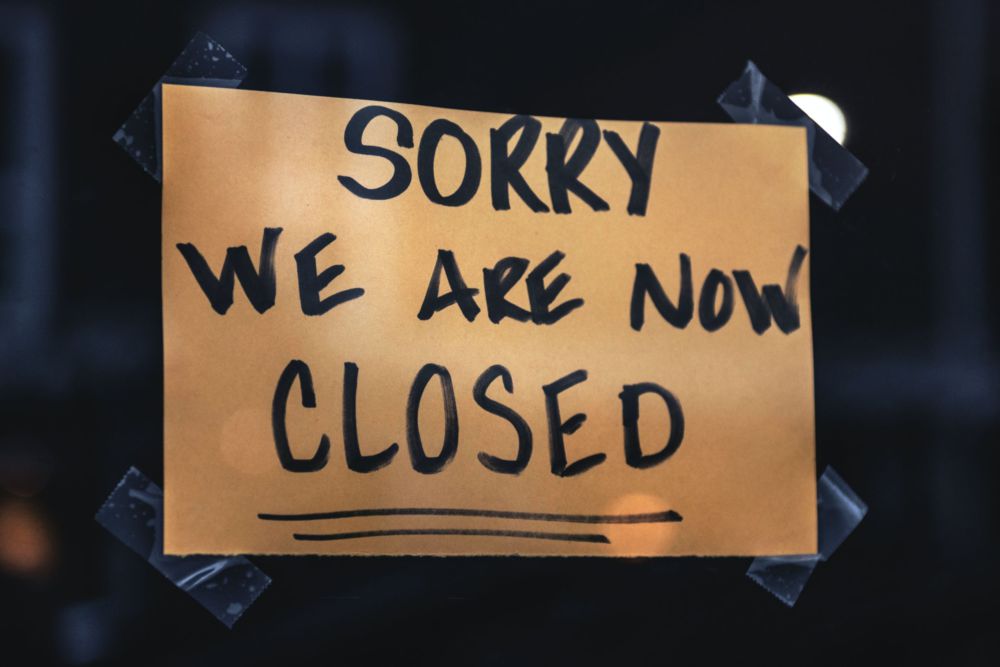
By Adam Rozan
Last year I caught up with Susana Bautista over Zoom to chat with her about her new book How to Close a Museum: A Practical Guide, which explores the steps necessary to professionally and ethically close down a museum or prepare for the possibility of closure. Our conversation grew out of conversations associated with the Closed Museums Google Tracker that aims to identify museums that have closed and the information related to the museum at the time of its closing. Her book includes twenty-five cases studies of permanently closed museums from this list, including one she closed down in 2018. We've intentionally not included specific examples for this post to not focus on the example, but the root cause.
Together we identified the five root causes of closures that have been excerpted from our conversation.
Reason # 1: Financial Security
Not having enough finances to sustain the organization through difficult periods or an unforeseen financial expenditure is a common and unfortunate cause for museums to close permanently. Financial security doesn't mean that you need millions in endowment, but it does require enough resources to withstand a bad quarter, or worse, a lousy year or more.
Do some scenario planning and analyze if your museum is financially able to handle the impact of an unexpected crisis such as a recession or pandemic. The fiscal responsibility of museum boards includes paying attention to red flags–such as subsequent years of debt, a single donor constantly bailing out the museum, loss of external funding, a sharp decrease in membership and attendance, a high turnover of staff (especially leadership)–and also planning for the future. Another red flag is if your museum does not have a cash reserve, bank line of credit, deferred maintenance fund, or other non-collection assets that could be used for emergency funding.
Reason # 2: Diversified Revenue Stream
The museum is overly reliant on a single or a few related revenue streams. Organizations without diversified revenue and funding sources are at risk for closure.
For example, the museum has one primary donor or relies on the revenue earned from facility rentals to meet its operating costs. If you rely on admission fees, what happens if you have to close temporarily? Or what if you rely on a significant corporate sponsor who suddenly goes out of business or has a change of leadership? Indeed, each museum will have a different percentage of each. Still, a diversified revenue stream includes both earned revenue (admissions, gift store, café, rentals, exhibition fees) and contributed revenue (membership fees, individual donations, corporate sponsorships, donations from foundations and public agencies).
Reason # 3: Costs Associated with Building or Property
The museum cannot sustain the costs associated with its building(s) and/or property.
These can be new costs associated with needed or unforeseen repairs or the expanded budget and additional costs associated with a building project. Museums undergo massive capital campaigns for facility upgrades, building expansions, and other satellite spaces. Still, these come with an increased operational budget that must also be part of the planning. For historic buildings, this is especially problematic with significant maintenance requirements and legal restrictions. Faced with permanent closure, we have seen some museums downsize or even become virtual operations.
Reason # 4: Community Support
One big problem is when museums don't have community support, which means you don't have the connection, goodwill, and trust built up with your community or critical local financial support.
Community support refers to the connections that the museum has within its community. When the museum is in trouble, does it have the breadth and depth of relationships to financially support, sustain, and advocate for the organization over time? Community support is paramount and speaks directly to the museum's connections and strengths within the community that the museum resides in and serves. This support includes institutional partners such as schools, libraries, other nonprofit organizations, local and community foundations, local businesses and corporations, and even your local media and public officials. The strength of your museum membership is usually a good sign of community support, as is its diversity in terms of representing all parts of the community.
Reason # 5: Transparency and Accountability
A lack of transparency and accountability for a museum's problems can generate even more internal issues with staff and boards and externally with funders, members, and partners.
Most museums don't like to publicize their problems or even share them with the staff until it's too late. The recent wave of unionizations demonstrates a demand for shared power, transparency, accountability, and equity at all levels, further pushed by the rise in popular anonymous social media accounts such as @changethemuseum. Also, a strategic approach to confiding in some of your community partners might result in unforeseen solutions, with some museums finding success going public with GoFundMe campaigns and other crisis media appeals.
Please note that the five reasons listed are aggregates. The closing of each organization is nuanced and not the product of one reason but the accumulation of issues, challenges, and decisions presented to the organization over time and having distinct encumbrances, Bylaws Articles of Incorporation, and other governance restrictions.
Explore the Closed Museums Google Tracker originated by Adam Rozan, and please help out with this research. Do you know a museum that closed in the U.S. or elsewhere? If so, please add your information to the Tracker.
Adam Rozan is a museum professional in the Washington, D.C. area, a leader in the audience engagement area, a co-founder of the International Audience Engagement Network, and the International Advisor to the Athens Greece CoMuseum Conference. Rozan explores the root causes of museum shuttering, which led to creating the Google Tracker. His goal is to make available and public all the available information on museums that have closed so that we can begin to understand the more significant lessons learned. Reach Adam at [email protected].



